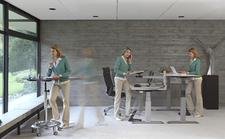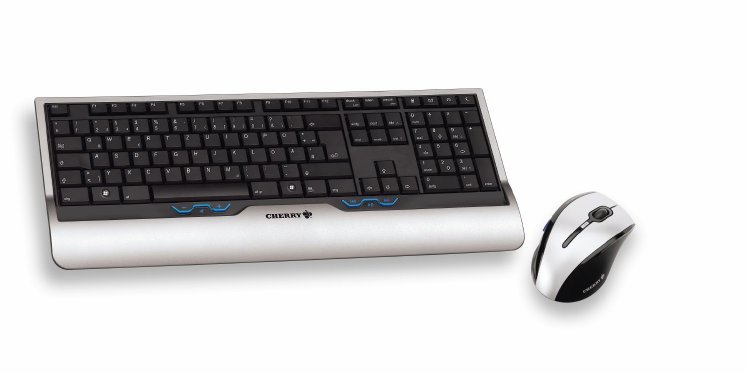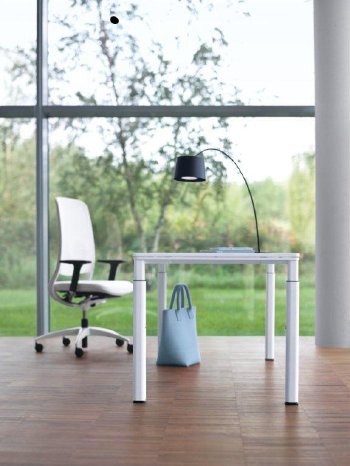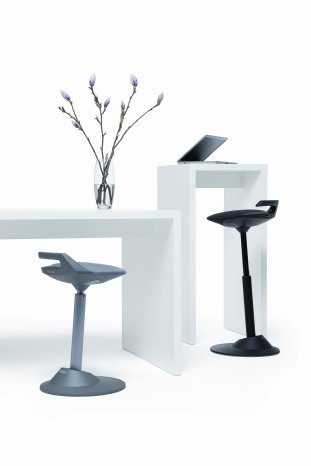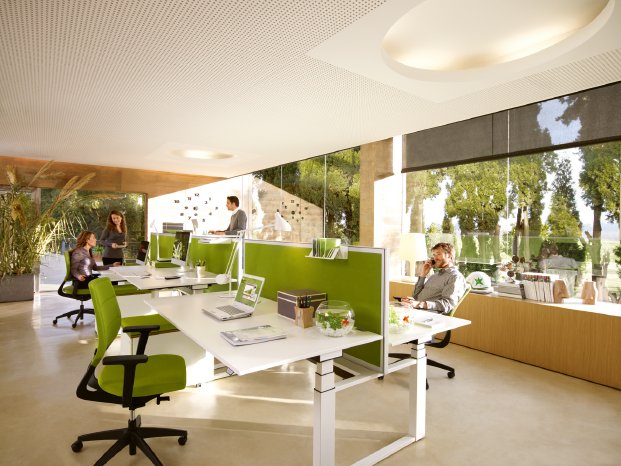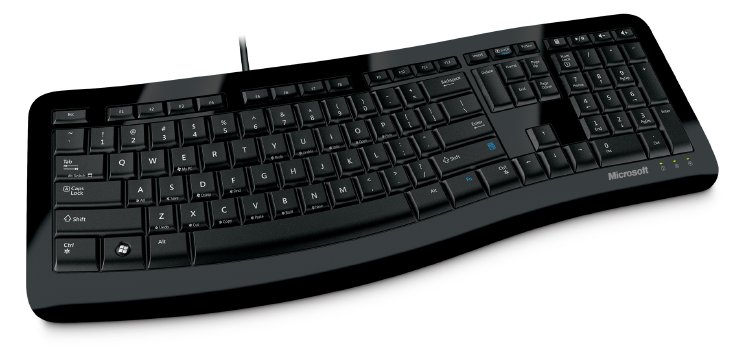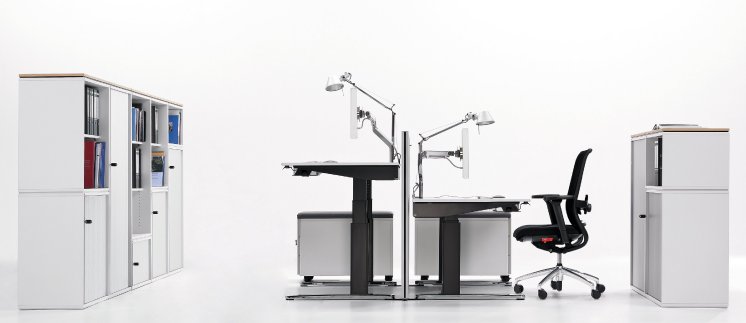Germany alone has more than 24 million VDU workplaces. That means almost one in three of Germany's 82 million population works regularly at the computer. If all of these people were to get backache, this would generate huge health-care costs and harm the economy to the same extent. Backache is already the most frequent cause of sick leave. In 2010, an analysis by the Techniker Krankenkasse showed that about 20% of the workforce was absent because of diseases of the musculoskeletal system. This alarming figure illustrates the great importance of a back-friendly office environment.
Sitting correctly in the office: movement is what counts Backache is frequently caused by a lack of movement and poor sitting posture in the workplace. "Active" sitting on the other hand reinforces the muscles, stimulates the circulation, maintains vital supplies to the intervertebral discs and relieves pressure on the inner organs. The best way to manage the balancing act between a sedentary job and sufficient movement for a healthy back consists in ergonomic office furniture. This refers to office chairs, desks, standing desks and PC input devices that foster dynamic sitting and working.
Orthopaedic specialists and occupational health experts also encourage a dynamic mix of standing and sitting. The rule of thumb is 50% sitting, 25% standing, 25% movement. Stand up to take a phone call, move the printer out into the corridor, take the stairs instead of the lift, speak to people personally instead of sending an e-mail - there's a long list of changes that can be implemented straightaway.
The priority for back-friendly office chairs is to foster dynamic sitting. This has been recognised by manufacturers and brands such as Sedus (www.sedus.de) and Drabert (www.kinnarps.de) who bring movement to the workplace with their office chairs. Important details such as synchronous adjustment between seat surface and back rest, individually adjustable leaning pressure, seat depth suspension, individual extensive iliac crest support, seat depth adjustment and many more are just some of the attributes that make AGR-tested products stand out.
Standing desks and standing seats also facilitate the standing/sitting dynamic encouraged by medical experts. Thanks to the height-adjustable worktop, classic sedentary tasks can now also be done while standing. That puts more movement and more creativity into the job while improving the blood flow and relieving the pressure on the back. AGR-certified office furniture with standing/sitting dynamic is available from Sedus, VS Möbel (www.vs-moebel.de) and officeplus (www.officeplus.de). Active/dynamic standing seats are an appropriate addition to a sedentary workplace, including for example the AGR-tested muvman by aeris (www.aeris.de), which can be used both for occasional sitting and for standing/sitting.
Back-friendly daily office routines: computer and mouse must fit in too Today more than 40% of the European workforce sits at computers. In some areas, e.g. the property and finance sector, the share of VDU workplaces even reaches 86%. Ergonomic computer input devices are therefore just as vital as correctly adjusted desks and chairs. A "poor" keyboard and computer mouse can cause tensions in the shoulders, painful wrists and tingling sensations through to numbness in the fingertips. The whole body suffers as a result, with a risk of pain particularly in the back, together with fatigue and loss of concentration. A back-friendly office environment therefore also needs ergonomic PC input devices. Here again, the AGR has drawn attention to positive examples including particularly suitable keyboards and computer mouse devices by Microsoft (www.microsoft.de/hardware) and Cherry (www.cherry.de).
Bouncing keeps you fit: creative work breaks Pain in the back of your neck, eyes watering, stiff shoulders - typical complaints suffered by office workers. A regular trampoline session during work breaks is an unusual way to prevent these classic symptoms while having fun at the same time. Whether jumping or just bouncing, the movement keeps body and mind fit and healthy. The "bellicon" mini trampoline (www.bellicon.com) has been awarded the AGR seal of approval and is therefore highly recommended.
More information about making every day more back-friendly together with back-friendly every products with the AGR seal of approval and a list of trained, certified retailers is available on request as an information package together with the "Ergonomic Guide" and the "Back signals" guide at a price of €9.95 from the AGR (phone +49(0)4284/926 99 90 or www.agr-ev.de/...).
In brief:
On average, Germans spend around 80,000 hours of their lives at their desks. There are more than 24 million VDU workplaces in Germany alone. That means almost one in three of Germany's 82 million population works regularly at the computer. And this is going to increase even further with the clear growth in computer workplaces, which will also mean more back problems. Backache is already one of the most frequent causes of sick leave. And yet it is quite easy to prevent tension, irritation and poor posture. The AGR (Campaign for Healthier Backs) gives valuable tips for ergonomic workplace design and work procedures when coping with sedentary jobs.
